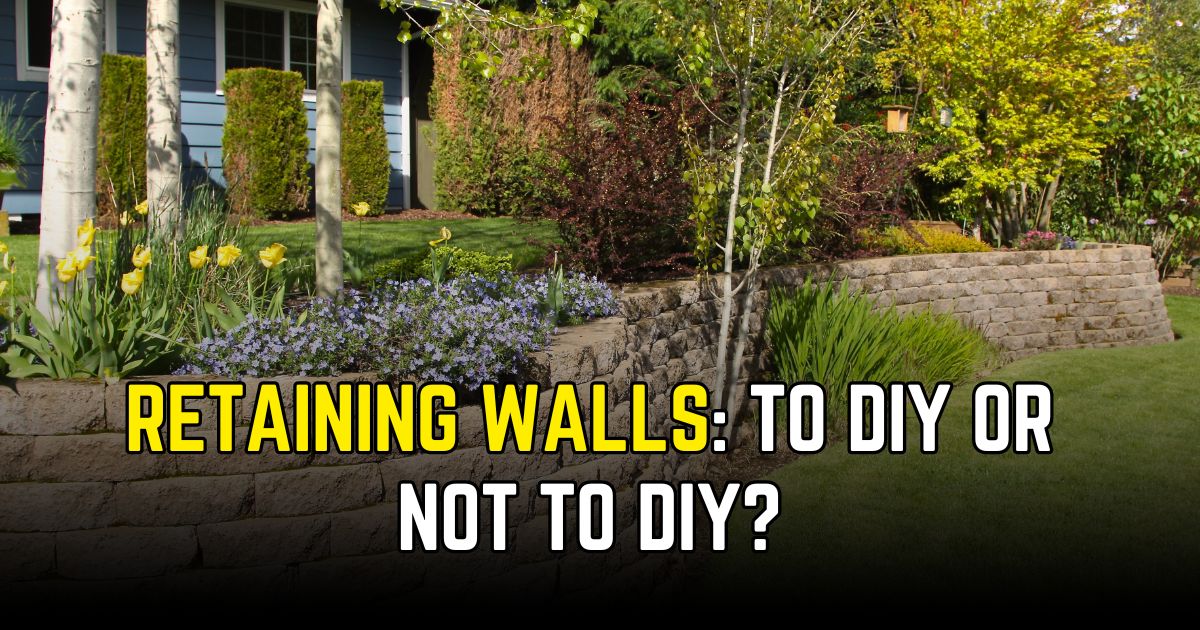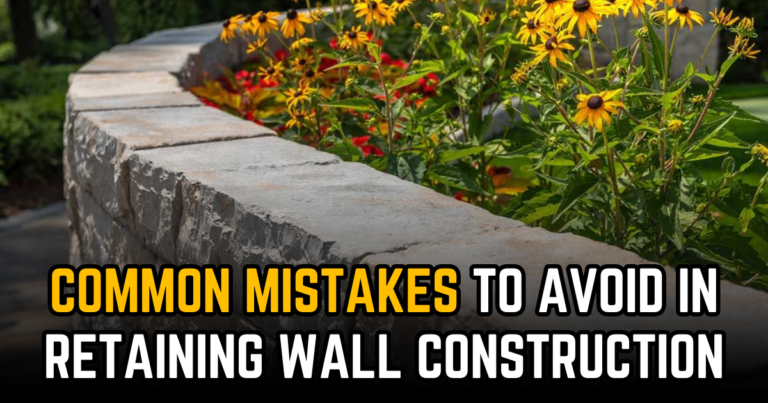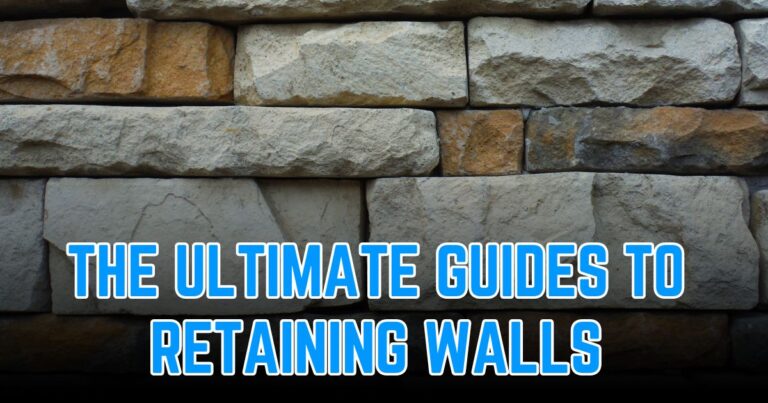Retaining Walls: To DIY Or Not To DIY?


If you’re considering installing a retaining wall, you may be wondering if you should tackle the project on your own or hire a professional. Retaining walls are important for preventing erosion, controlling water flow, and creating usable outdoor space on a slope.
While DIY installation can save you money and give you control over the project, it also comes with risks.
In this article, we’ll explore the pros and cons of DIY installation versus hiring a professional, and offer guidance on how to choose the best option for your circumstances.
Introduction
Retaining walls are structures that are used to hold back soil and prevent erosion. They can be made from a variety of materials, including concrete, stone, brick, and wood. Retaining walls are important for controlling water flow, preventing damage to buildings and other structures, and creating usable outdoor space on a slope.
One of the first decisions you’ll need to make when considering a retaining wall project is whether to tackle it yourself or hire a professional. While DIY installation can save you money and give you control over the project, it also comes with risks.
On the other hand, hiring a professional can ensure a faster completion time, reduce the risk of damage or injury, and provide access to expertise and experience.
Also read Retaining Walls: To DIY Or Not To DIY?
Pros and Cons of DIY Retaining Wall Installation
Benefits of DIY Installation
Cost savings: One of the main benefits of DIY installation is the potential cost savings. By doing the work yourself, you can save on labor costs and potentially reduce material costs as well.
Control over the project: When you install a retaining wall yourself, you have complete control over the project. You can decide on the design, materials, and construction methods that best suit your needs and preferences.
Satisfaction of completing the project: There’s nothing quite like the satisfaction of completing a home improvement project on your own. DIY installation can give you a sense of accomplishment and pride in your work.
Risks of DIY Installation
Lack of experience: Retaining wall installation requires specialized knowledge and skills. If you don’t have experience with this type of project, you may struggle to complete it safely and effectively.
Improper installation: A poorly constructed retaining wall can lead to a range of issues, including structural failure, soil erosion, and water damage. Improper installation can also be dangerous, both during the installation process and in the long term.
Safety hazards: Retaining wall installation can be physically demanding and potentially dangerous. If you’re not experienced with heavy lifting, digging, and other construction tasks, you may be putting yourself at risk of injury.
Pros and Cons of Professional Retaining Wall Installation
If you’re uncomfortable tackling a retaining wall project on your own, hiring a knowledgeable contractor is the best option for you.
Here are some advantages and disadvantages to consider when hiring a professional:
Pros of Hiring a Professional
Expertise and Experience – Professionals have the skills and experience needed to complete the project quickly and efficiently without sacrificing quality.
Faster Completion – Professionals have access to specialized tools and equipment, which can help speed up the installation process.
Reduced Risk of Damage or Injury – Professionals are trained to identify potential problems and address them before they become bigger issues.
Cons of Professional Installation
Higher Cost – Professional installation can be more expensive than a DIY project, as you’ll be paying for the contractor’s expertise and labor.
Limited Control Over the Project – When you hire a professional, you’ll be relying on their expertise and experience to make decisions about the project.
This can be a downside if you have specific ideas about how you want the wall to look.
Considerations for Choosing Between DIY and Professional Installation
Deciding whether to tackle a retaining wall project on your own or hire a professional contractor depends on a variety of factors. Here are some things to consider:
Budget – DIY installation can save you money, but you’ll need to consider the cost of materials and equipment, as well as any additional expenses that may arise during the project.
Professional installation may be more expensive, but you’ll be paying for the contractor’s expertise and labor.
Time Constraints – If you’re short on time and need the project completed quickly, hiring a professional may be the best option.
Skill Level – Be honest with yourself about your level of experience and expertise. If you’ve never tackled a retaining wall project before, it may be best to leave it to the professionals.
Complexity of the Project – The complexity of the project can also impact your decision. If the project is relatively simple, such as a small garden wall, you may be able to handle it on your own.
If the project is more complex, such as a large retaining wall, hiring a professional may be the best option.
Ultimately, the decision to install a retaining wall as a DIY project or to hire a professional comes down to individual circumstances.
Take the time to assess your own abilities, budget, and time constraints before making a decision.
Conclusion
In summary, retaining walls can be installed either as a DIY project or by hiring a professional contractor. Each option has its own pros and cons, and the decision ultimately comes down to individual circumstances.
If you’re considering installing a retaining wall, take the time to assess your own abilities, budget, and time constraints before making a decision.





